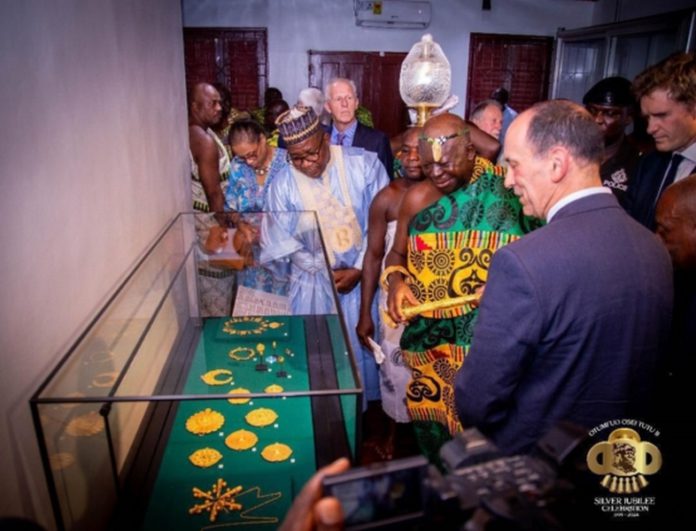The Asantehene, Otumfuo Osei Tutu II is worried Ghana and by extension the African continent are losing out on the prospects and economic gains of local and traditional contemporary arts.
He observes the high attrition of the continent’s creatives and exile of local artefacts to western countries, which he believes could impact the preservation of African history and relics.
Speaking at the homecoming of the 32 looted royal artefacts by the British, the Asantehene noted that although a significant number of African artists are celebrated globally, their handiworks are elusive in most museums in Africa.
“There are many galleries springing up in modern African cities and there are reviews of contemporary African art in major media, including CNN, Bluesbury, CBS, and SABC of young African artists who have graduated from art schools within the continent and abroad.
“Many of their products are sadly not in African galleries for sale and are easily bought by non-African with interest in them or to be branded and marketed for bigger profits,” he said.
The Asantehene is questioning how local contemporary arts could be promoted in Ghana and on the continent.
“What can we do to save some of the creative energies of especially contemporary artists is some of the exhibition of objects that we’re taking forcibly at war and sometimes at peace. These artworks are precious objects that would be worth millions in the future. Will many Africans have to travel to see these in future?” he quizzed.
To promote indigenous production of some contemporary relics, the Asantehene has requested the institution of an annual competition among artists in Ghana.
The event is expected to support in showcasing the magnificent artistic designs of local producers, while preserving the rich history and uniqueness of the continent.
It would institute three prizes a year in traditional finance.
“I asked the Manhyia Palace Museum to design a project to support traditional arts in Ghana and we’ll be collaborating with the KNUST College of Arts and some of our partners including the British Museum, the Victoria and Albert Museum, a British Airways and IAG cargo to support this in 10 years from 2025.
“The works of major finalists will not only be purchased for the upcoming contemporary court Art Museum, so we can help retain some of the creative products in this country. I’ll be meeting some of these Ghanaian artists, painters, goldsmiths, and see how we can collectively work with some of the royal or traditional art groups,” he revealed.
Otumfuo also hopes to collaborate with private galleries for collection and exhibition of local artefacts.
“When the modalities are set up, we will also work with private galleries in the country to at least retain some of the productions. It is not always that we have to solicit for things we can strive for and do for ourselves,” he said.
Meanwhile, the British museum is exploring means to foster partnerships with the Manhyia museum through more knowledge and cultural exchanges.
“The British museum is firmly committed to building productive and forward-looking relationships using these collections today,” said the Asantehene.

